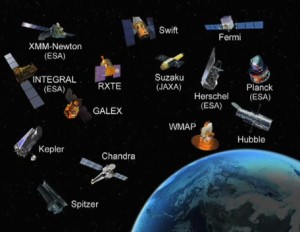 Once again I’m excited about a new piece of machinery. This time it is a space mission again. There have been several remarkable missions launched (many in very recent years), doing all sorts of excellent science, helping us discover all sorts of things about our universe, near and far, young and old. I’ve spoken about (and sometimes followed live) the launches of some of them here on the blog, or spoken about the science results they’ve helped produce. See the graphic on the right for some of them.
Once again I’m excited about a new piece of machinery. This time it is a space mission again. There have been several remarkable missions launched (many in very recent years), doing all sorts of excellent science, helping us discover all sorts of things about our universe, near and far, young and old. I’ve spoken about (and sometimes followed live) the launches of some of them here on the blog, or spoken about the science results they’ve helped produce. See the graphic on the right for some of them.
 Well, very soon (possibly as early as December 9th), there will be the launch of WISE, the Wide-field Infrared Survey Explorer! I learned from my friend, colleague and fellow presenter on History Channel’s The Universe, JPL’s Amy Mainzer, who is a senior scientist and the deputy project scientist on the WISE mission, that they made a series of exciting videos about WISE for you to learn about the science that WISE will do and how it will go about […] Click to continue reading this post →
Well, very soon (possibly as early as December 9th), there will be the launch of WISE, the Wide-field Infrared Survey Explorer! I learned from my friend, colleague and fellow presenter on History Channel’s The Universe, JPL’s Amy Mainzer, who is a senior scientist and the deputy project scientist on the WISE mission, that they made a series of exciting videos about WISE for you to learn about the science that WISE will do and how it will go about […] Click to continue reading this post →
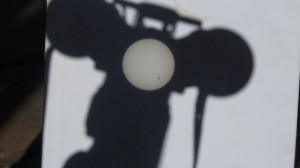 I set up some simple 10×50 binoculars on my tripod, and after a tiny bit of fiddling, out pops the transit in progress from the other end, projected on to the back of an envelope! (The envelope was helpfully held still by a friend so that I could take the photo.) (Click for larger view.) […] Click to continue reading this post
I set up some simple 10×50 binoculars on my tripod, and after a tiny bit of fiddling, out pops the transit in progress from the other end, projected on to the back of an envelope! (The envelope was helpfully held still by a friend so that I could take the photo.) (Click for larger view.) […] Click to continue reading this post 

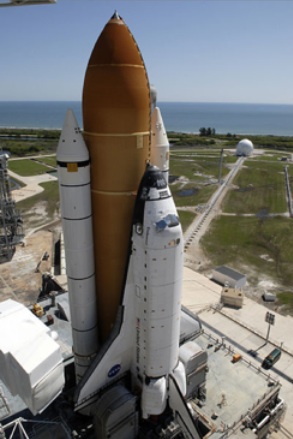
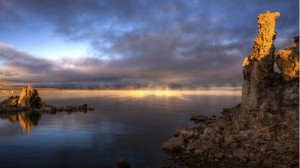

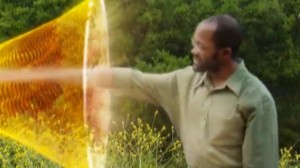
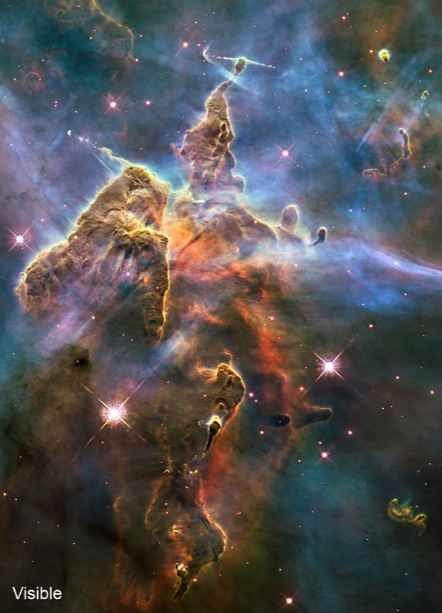





 Another meteor shower is almost upon us. Next week it is the turn of the Leonids. Now, as the name implies, these have their apparent origin in the constellation Leo. So how visible it will be for you, if you live in an urban area, might depend upon Leo’s position in the sky relative to your local bright city lights at the time of viewing. But it is worth trying. Look for a public park, rooftop, or other open area of sky. Parks can be better for pulling you away from some of the immediate lights, and then sit still and look at one patch of sky steadily for a while (generally in the right direction!) To get guidance, have […]
Another meteor shower is almost upon us. Next week it is the turn of the Leonids. Now, as the name implies, these have their apparent origin in the constellation Leo. So how visible it will be for you, if you live in an urban area, might depend upon Leo’s position in the sky relative to your local bright city lights at the time of viewing. But it is worth trying. Look for a public park, rooftop, or other open area of sky. Parks can be better for pulling you away from some of the immediate lights, and then sit still and look at one patch of sky steadily for a while (generally in the right direction!) To get guidance, have […] 



